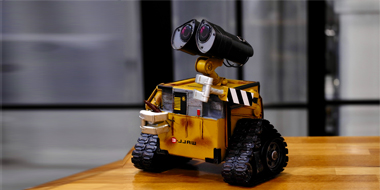Internet Of Things
What can Telecom Operators do to leverage the full possibility of the Internet of Things?
21/06/2016 | Skriven av: Gästbloggare
Categorized: Internet Of Things
Share this post:

Richard Savage, Senior Managing Consultant IBM – Internet of Things
Telecom operators have been struggling in bringing profitable IoT offerings to market, with particular focus on the enterprise space. The initial focus over the last 10 years has been on using Machine to Machine Solutions rather than real Internet of Things solutions. Most operators have supplied simple productified solutions to their customers who have already figured out they need to send data up to the cloud for some sort of instrumented solution or in some markets Smart Energy Soltuions, ie sending up Energy usage to the cloud.
View from the Telecom Industry
Telecom Operators are considering Internet of Things as the next evolution in their business plans. Let’s take a moment to consider the reasons, and if you like the perfect storm that has lead us to this point.
Over the past 10 years operators have used the evolution of Wireless Technology such as 3G, HSPA, HSDPA, LTE, LTE Advanced, purchase of frequencies as the main reason for driving their business forward. First came Dongles and Mobile Broadband, quickly followed by the introduction of Smartphones and soon we were all off on a roller coaster ride of more speeds, bigger screens and a ubiquitous coverage to feed the insatiable need of the Smartphone user.
Wifi has been added to the mix over the last 10 years as well. Often and initially used as backhaul to Wireless Technologies, Wifi has taken on a life on its own and became a new source of revenue streams.
This drove down Semi conductor prices, drove Smartphones to becoming a commodity. It drove down infrastructure pricing and initiated an enormous overhaul of the Infrastructure provider picture as we know it, convergence of players and the fall and rise of Nokia(Siemens) for example.
At the same time 3 things have happened in the sensors world in the last 5 years: Sensors not only are deployed in the millions across enterprises, cities and regions. They are also become more and more context aware (they know where they are, the temperature around them, they can sense motion, etc), their CPU is increasing (making it possible to transfer some basic computing function at the network and sensor levels), and they are becoming more and more energy independent.
This has led to consumers having an enormous choice over Smartphones, Operator choice and coverage that is pretty much the same whoever you to turn to. It also has led to an unprecedented deployment of sensors around the world, opening up to the opportunity to develop new revenue streams for operators. Operators are now developing new strategies and offerings– both in the consumer as well as in the business worlds – with Internet of Things becoming the accelerator!
View from the Industry Sector
The changes in the Telecom Industry did not go unnoticed in foremost the Industrial Sector. Considering the fact that we now have high speed ubiquitous data coverage, advanced processor devices such as Raspberry Pi and Arduino costing around 30 Euros, and industrialised volume driven 2G Data modules costing less than 20 Euros, companies have begun to realize that connecting up a couple of machines, or sensorising factories or even people is no longer a cost issue.
New technologies such as Sigfox and LoRa appeared on the market that was covering an essential need of these companies: Long life device/sensors, cheap devices and a simple way of connecting up without even involving SIMS. Such technologies appear as disruptors to the market as the Telecom Operators are not perceived to be able to offer this value.
With Industrial companies leading the way Internet of Things projects focused on connecting sensors on a few selected machines to be able to predict expensive shut downs of the factory floor. To the surprise of everyone, Telecom Operators did not get involved on those initial projects, or even the need of such typical Telecom solutions such as SIMS, Sim Chips and Data Plans. In fact most of these solutions were solved with mesh networks, Wifi and connecting up old SCADA systems to the ready made Cloud solutions such as Amazon Web Services, or IBM Blue Mix.
From the Industrial perspective companies like Amazon, IBM and Google started to become primary partners, rather than the traditional Telecom Operators. This gave birth to what is commonly now known as the Industrial Internet of Things.
In summary Internet of Things happened because we have 3 foundational factors: Ubiquitous data coverage, low device/silicon prices and a real need to effectivise everything around us.
How does the Telecom Operator typically handle the needs of the Internet of Things Today?
The typical Telecom Operator has been offering a technology Machine To Machine solutions for almost 20 years. The typical offering has been based on selling a certain volume of SIMS connected up to a Data Plan for the customer. This business is usually quite a high margin, but very low volumes. The M2M solution is a typical product offering to a customer. The customer has a need to connect up their products and the Operator is happy to supply a solution. It is a one business transaction.
Most operators therefore have a big difficulty moving up the value chain to day providing Cloud based solutions, data storage and data analytics. Some operators attempt and sometimes succeed in doing this but most haven’t bothered to change the most important weakest link in the chain! Which is of course the fact that the Sales team still sells SIM cards and are bonused and paid as such!
How to break the Vicious Circle?
The paradox is that most Telecom Operators are more than likely the natural Go To Market Partner for many companies interested in Internet of Things. The operator therefore has a number of offering options which are completely pragmatic and perhaps can be discovered over a period of time:
- Offer a Data Plan that is tied into the real Customer’s needs ie probably the need and wish to want to send up as much to the cloud as possible. (opposed to be being forced to cut down on data traffic due to cost)
- Offer an IOT Customer Journey together with for example IBM. Many customer’s need help in understanding the challenges of introducing an IOT Product into their companies. Most of the time Strategy is the one subject that is often missed and ignored. Technology is usually the driver which leads many company’s down a route of miss-understanding their own real needs for IOT
- Offer a Platform that can offer : Connectivity management, Device Management, API Management, and last but certainly not least a large Analytics Platform that is adding new API’s every day.
With these tools in hand Telecom Operators will be able to realise the full value of the Internet of Things rather than continue down the Machine to Machine path of price wars and productification.
/Richard
Follow me on:  Twitter and
Twitter and  LinkedIn
LinkedIn
Om robotarna tar över våra jobb, vad ska vi göra då?!?
I Pixar Studios datoranimerade klassiker Wall-E har vi människor förstört vår planet genom överdriven konsumtion och blivit tvingade att ta vår tillflykt till ett rymdskepp som lite planlöst driver omkring i rymden i väntan på bättre tider. Där spenderar vi våra dagar utan större syfte eller mening medan robotar sköter alla manuella sysslor och passar […]
AI + IoT = AIoT
I kölvattnet på den digitalisering som sveper över samhället i stort och som inom industrin har kommit att kallas för Industri 4.0 har det börjat pratas allt mer om möjligheterna med – och värdet av – att kombinera artificiell intelligens (AI) med internet of things (IoT). I det här blogginlägget tänkte jag titta lite närmare […]
Jämna Plågor
Om jag minns rätt var det komikern Ronny Eriksson som funderade över det måhända specifikt svenska i svaret ”Jämna plågor”, på frågan ”Hur är det?”. Det är som att säga “Visst gör det ont, men det gör lika ont hela tiden!”. Och lite så har 2019 varit. Visst har där funnits diverse politiska kontroverser, långbänkar och tråkigheter, som […]



